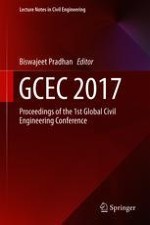2019 | OriginalPaper | Chapter
Analysing Petroleum Leakage from Ground Penetrating Radar Signal
Authors : Zulkarnaini Mat Amin, Norwahidatul Akma Kamal, Norhazimah Husna Shokri, Amalina Yusop
Published in: GCEC 2017
Publisher: Springer Singapore
Activate our intelligent search to find suitable subject content or patents.
Select sections of text to find matching patents with Artificial Intelligence. powered by
Select sections of text to find additional relevant content using AI-assisted search. powered by
